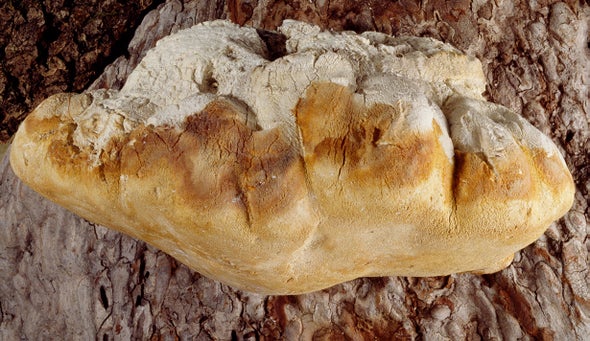生物制造公司对使用真菌的前景越来越兴奋,以生产塑料和皮革的坚固,可持续的替代品。但新发现表明土着美国人已经制造了“mycotextiles.“至少一个世纪以前。研究,出版于体力学,确认了由1903年在阿拉斯加的一名Tlingit妇女制作的两个墙口袋的真菌来源。欧洲也已经报道了一些历史的植物学用途,但“我知道,这是第一次在任何地方使用这种材料的文件北美洲,“维多利亚大学的民族博士学位南希特克尔说,该学家没有参与这项研究。
学习合作社揭露哈耶恩斯在达特穆茅斯博物馆艺术博物馆的收藏文件经理工作时,在工作时担任文物。原位拥有其中一个口袋,在博物馆的收藏中发现:“一副真菌袋。婚礼礼物从印度邻居。“兴趣的,海恩斯花了致电专家来证实这一识别 - 但没有听说过真菌纺织品,而她的询问吸引了很少的兴趣。“直到我弄清楚这些事情是什么,我就无法放手,”她说。
Haynes最终通过使用Dartmouth的电子扫描显微镜设施仔细观察。图像揭示了霉菌晶状体般的螺纹般的螺纹般的真菌结构,渗透土壤或木材,可以形成强,柔软和耐用的厚垫。“你不能用手撕裂它;这就像皮革一样,“明尼苏达大学森林病理学家罗伯特·普罗兰特·博伦特(Robert Blanchette)学习说。
Comparing details of the mycelia with modern species descriptions, Blanchette determined that the bags were made from the agarikon fungus—a tree-decaying species that is now disappearing along with the old-growth forests of the western U.S. “This was a significant fungus for Indigenous people. It was used medicinally and spiritually all along the Pacific Northwest coast,” Blanchette says. According to one medical anthropologist, the Spokan people in Washington State used agarikon mats in cradleboards for diaper rash. Twentieth-century loggers described bandaging wounds with it, and the ancient Greeks used it to treat tuberculosis. Recent studies suggest agarikon extracts have antibacterial and antiviral properties, and they may even be effective in animals at治疗一些癌症。
“有可能使用这种材料有更多的证据,它可能在博物馆和收藏中,”特纳说。没有生物制造公司目前使用agarikon菌丝垫。但Blanchette表示,他们可以在实验室中培养,使这种罕见的物种也是现代Mycotextile应用的可行选择。
编者的说明(5/20/21):本文在发布后修改,以纠正Deborah Tear Haynes在Dartmouth学院的艺术博物馆的职位的描述。此外,本文中的照片的位置于5月19日纠正。

